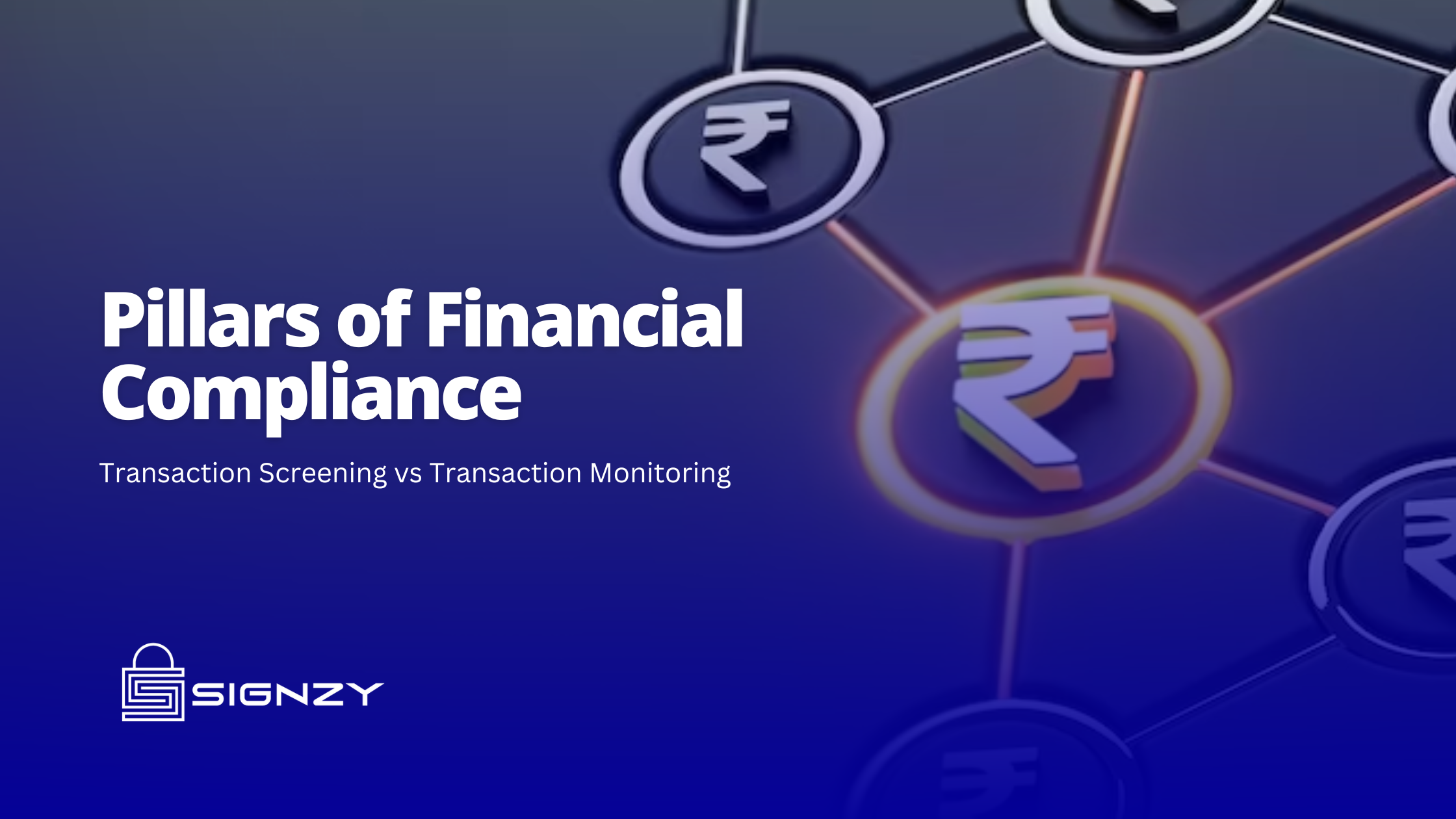Transaction Screening vs Transaction Monitoring
In the rapidly evolving fintech industry, maintaining robust financial compliance is more critical than ever. Two key components of this compliance landscape are Transaction Screening and Transaction Monitoring. Each plays a vital role in detecting and preventing financial crimes such as money laundering and fraud. This blog delves into the intricacies of these mechanisms, compares their functionalities, and explores the challenges and future trends in this domain.
Defining Transaction Screening
Transaction Screening is the process of vetting transactions against predetermined criteria to identify potential risks. It involves checking transaction details against various watchlists, including those related to sanctioned individuals, entities, or countries. For example, a fintech company might use algorithms to screen transactions against OFAC (Office of Foreign Assets Control) lists to ensure compliance with international sanctions.
Exploring Transaction Monitoring
Transaction Monitoring, on the other hand, is a dynamic process. It involves the continuous analysis of customer transactions to identify patterns that might indicate suspicious activities. This process is critical in identifying unusual patterns that could signify money laundering or terrorist financing. Advanced machine learning models, for instance, can detect anomalies in transaction behaviors, flagging potentially risky activities for further investigation.
Comparing Screening and Monitoring
While both processes aim to mitigate financial crime, their approaches are distinct. Screening is a preventative measure, stopping risky transactions before they occur, whereas monitoring is detective, identifying risks within ongoing transactional activities. The recent case of Revolut, a leading fintech player, highlights this difference. Revolut enhanced its transaction monitoring system using machine learning algorithms, resulting in a significant reduction in false positives compared to traditional rule-based systems.
The Role of Technology
Technology is the linchpin in both screening and monitoring. Artificial Intelligence (AI) and Machine Learning (ML) have revolutionized these processes. Advanced algorithms can now analyze vast amounts of data for potential risks, improving accuracy and efficiency. A report by McKinsey & Company emphasizes the growing reliance on AI in transaction monitoring, noting a substantial improvement in detection rates and operational efficiency.
Regulatory Compliance and Legal Implications
The legal landscape in financial compliance is complex and ever-changing. Fintechs must navigate regulations such as the Anti-Money Laundering Directive in the EU or the Bank Secrecy Act in the USA. Non-compliance can result in hefty fines. For example, in 2020, the Financial Crimes Enforcement Network (FinCEN) imposed fines exceeding $10 billion globally for non-compliance issues.
Challenges in Implementation
Implementing effective screening and monitoring systems poses several challenges. The foremost is balancing sensitivity and specificity—too strict, and the system generates excessive false positives; too lenient, and genuine risks might slip through. Integrating these systems into existing infrastructures and ensuring they are adaptable to changing regulations is another significant challenge.
Best Practices for Financial Institutions
To optimize transaction screening and monitoring, financial institutions should:
- Employ a layered approach, combining various types of screening and monitoring tools.
- Regularly update their systems to align with the latest regulatory requirements.
- Invest in training for staff to recognize and respond to flagged transactions appropriately.
- Utilize data analytics to continuously refine and improve their compliance processes.
Future Trends in Transaction Compliance
Looking ahead, we can expect several trends in transaction compliance:
- Increased use of AI and ML for real-time analysis and decision-making.
- Greater emphasis on cross-border collaboration for global compliance.
- Development of blockchain technology for enhanced transparency and traceability in transactions.
- Rising importance of privacy-preserving analytics in compliance, balancing data utility and privacy.
Transaction Screening and Transaction Monitoring are not just regulatory requirements but essential tools in the fight against financial crime in the fintech sector. Their effective implementation ensures the integrity of financial systems and protects institutions from legal repercussions.
About Signzy
Signzy is a market-leading platform redefining the speed, accuracy, and experience of how financial institutions are onboarding customers and businesses – using the digital medium. The company’s award-winning no-code GO platform delivers seamless, end-to-end, and multi-channel onboarding journeys while offering customizable workflows. In addition, it gives these players access to an aggregated marketplace of 240+ bespoke APIs, easily added to any workflow with simple widgets.
Signzy is enabling ten million+ end customer and business onboarding every month at a success rate of 99% while reducing the speed to market from 6 months to 3-4 weeks. It works with over 240+ FIs globally, including the 4 largest banks in India, a Top 3 acquiring Bank in the US, and has a robust global partnership with Mastercard and Microsoft. The company’s product team is based out of Bengaluru and has a strong presence in Mumbai, New York, and Dubai.
Visit www.signzy.com for more information about us.
Contact us directly!



